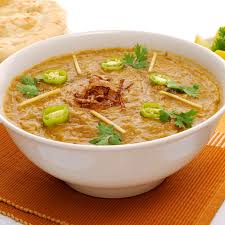Haleem an underrated forgotten dish
Discover the rich history, exquisite taste, and nutritional benefits of Haleem, a dish deeply rooted in Middle Eastern and South Asian traditions. From its origins to its modern-day variations, this blog takes you on a flavorful journey through one of the most beloved slow-cooked delicacies.
FOOD CHRONICLES
Atulya Raj Anand
2/16/20251 min read


Haleem: A Hearty and Flavorful Delight
Food is more than just sustenance—it’s a story, a tradition, and an experience. Recently, I had the pleasure of indulging in a bowl of Haleem, a dish that beautifully combines history, flavor, and nutrition into one rich, comforting meal.
The History of Haleem
Haleem has its origins in the Middle East, with roots tracing back to the Arabian dish known as "Harees." It was introduced to the Indian subcontinent during the Mughal era and became particularly popular in Hyderabad. The dish evolved over time, incorporating local spices and ingredients, resulting in the flavorful and aromatic version we enjoy today. Hyderabadi Haleem, in particular, gained prominence due to the royal kitchens of the Nizams, where it was perfected as a high-energy dish, especially during Ramadan.
The Taste and Experience
Haleem is a slow-cooked dish made by blending wheat, barley, lentils, and either beef, mutton, or chicken into a thick, paste-like consistency. The dish is enriched with aromatic spices, ghee, and garnished with fried onions, fresh coriander, and lemon juice. The first spoonful delivers a burst of deep, meaty richness, complemented by the nuttiness of grains and the warmth of spices. It is both filling and deeply satisfying, making it a perfect dish for special occasions or a hearty meal after a long day.
Nutritional Breakdown of Haleem
A typical serving of Haleem (about 250g) provides:
Calories: 350-450 kcal
Protein: 20-25g
Carbohydrates: 40-50g
Fats: 10-15g
Fiber: 5-7g
The nutritional value can vary based on the ingredients used, but Haleem is known for being a balanced dish packed with protein and fiber, making it a great choice for sustained energy release.
Final Thoughts
Haleem is more than just a dish; it is an experience rich in culture, history, and flavor. Whether you try it during Ramadan or at a local eatery, its comforting taste and hearty texture make it a must-try for anyone who loves traditional cuisine. If you ever get the chance, indulge in a bowl of Hyderabadi Haleem—it’s a culinary masterpiece that leaves a lasting impression!
